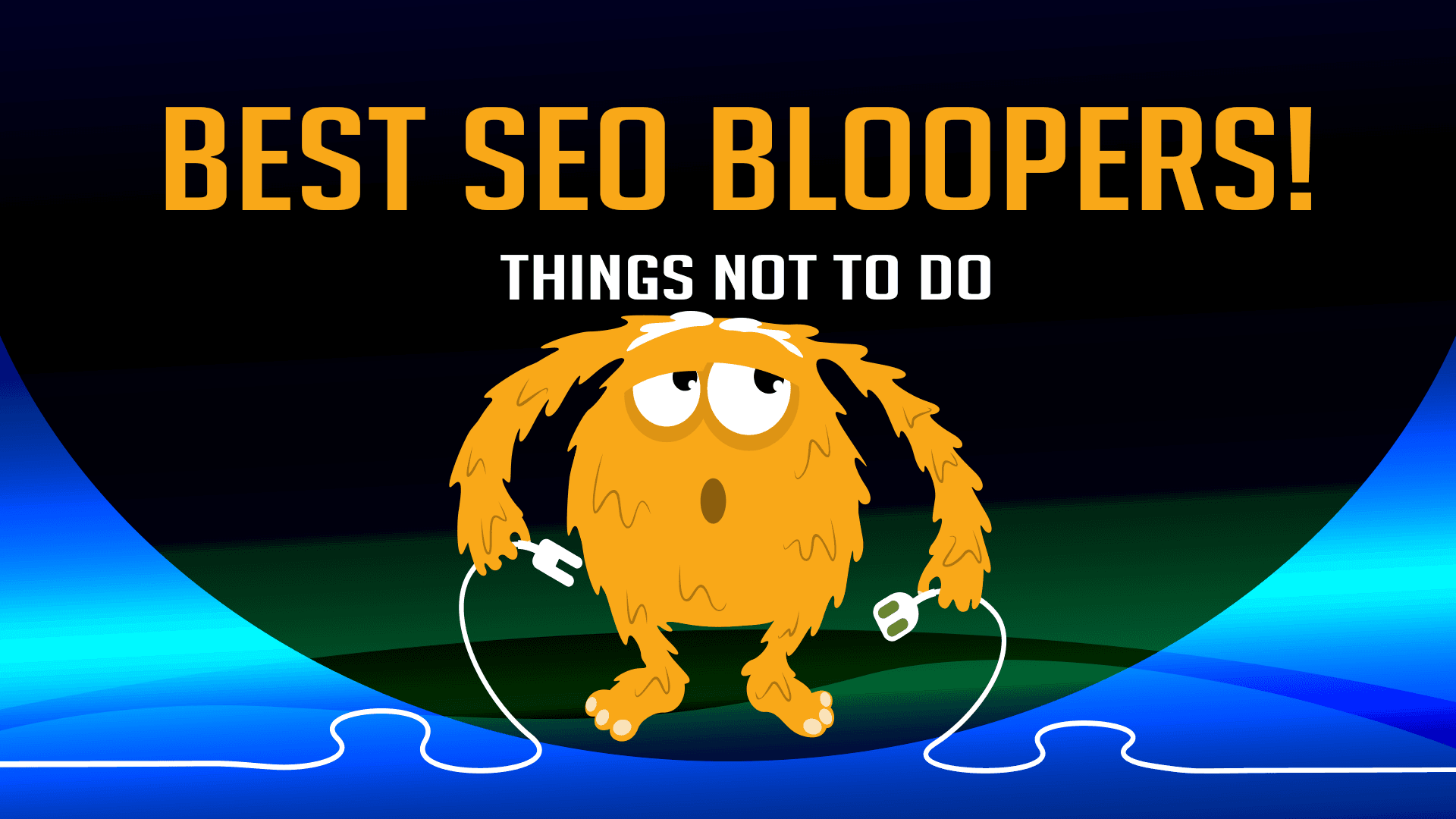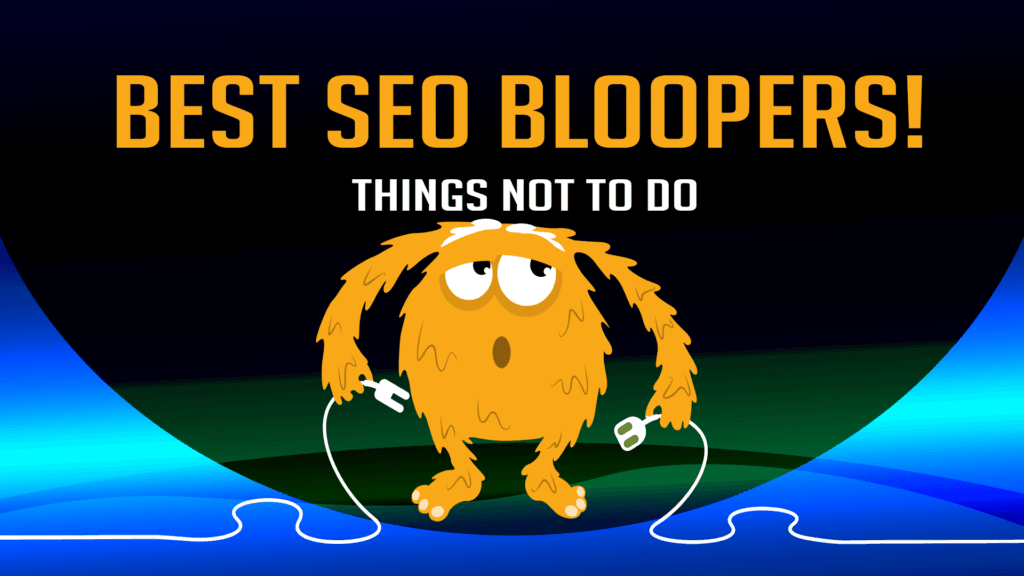 Updated June 22, 2025
Updated June 22, 2025
So you think you’re ready for SEO?
In a previous article we took a look at the top SEO questions that clients ask. We are always pleased to help our clients understand the concepts behind our search engine optimization process, as well as the specific steps we take to make improvements. The only stupid question, as the old adage goes, is the one left unasked. There is one big question we would like to put forth for you to consider as you develop your website for greater visibility: Are you ready?
You may be hearing from all corners that you need SEO, and we agree! But first, make sure you don’t wind up making any of the “best” SEO bloopers! Break down the “Are you ready?” question to see whether or not the time is now.
SEO Blooper #1: Keyword Stuffing
How up-to-date are you on best SEO practices? Some techniques that may have worked years ago are no longer valid and in fact, could land your website at the bottom of the search pile. One of those poor techniques is keyword stuffing. This mistake uses a target keyword or slight variations on the keyword too many times. Reading the same words over and over again that are obviously there for Google rather than people makes for an annoying and frustrating user experience. And ironically, Google doesn’t like it either.
Instead of stuffing keywords into your text, use natural keyword integration for stronger content that is good for SEO and pleasant reading for humans. The current advice on keyword use is to go with 1-2% keyword density, i.e., use the target keyword no more than once or twice per every hundred words. Most importantly, use your judgment. Strong, clear writing that is appealing to readers is the first step. Then be sure that the target keyword appears naturally for best results.
SEO Blooper #2: Complete SEO… Immediately Rewrite Web Pages
Sometimes when we speak to a new client, they have very defined ideas about the keywords they would like to target for high ranking on their website. A vital question that at times has not yet been answered is this: Does the site have content that focuses on and uses those keywords? If so, some or all of the client’s suggested keywords will likely turn out to be strong choices. If not, our research will find the best contenders. Another, broader question that needs to be answered is “Is the website about what you want it to be about or will you soon be inspired to change everything?”
It is a helpful attitude to want your website to be the best it can be at all times, even if you intend to change it at some point in the future. But if you’re planning a major overhaul, it is best to wait until afterward to get into the details of SEO. If you choose keywords and optimize pages based on current content in one week only to change emphases and make major edits and rewrites the next, you will lose the time, energy, and money you just put into your SEO. Choose your direction, write the content, add some compelling media, then optimize your site for the best value.
SEO Blooper #3: Optimize for Services You Don’t Offer
Here is a specific question to help you nip the “change everything” impulse in the bud. Do your services pages reflect the services you actually offer? It may sound like a strange question, but it is an important one when determining your readiness for SEO. Businesses do change; you may have stopped offering some services and have begun others. Are those changes reflected on the website?
It is a waste of time and energy to optimize pages that refer to an older or different version of your business if the services shown are not what you do currently. Research to determine the best keywords for your website will largely be based on current content, so it is important to review it and make sure it’s good to go. Avoid confusion and high bounce rates by aligning your web content to what you really offer, then move ahead to SEO.
SEO Blooper #4: Complete SEO… Decide to Change the URL
Is your web address the one you really want? Is it easy to remember? How many other sites link to you at your current address? These are all questions to ask yourself before embarking on SEO. Your web address, or URL (Uniform Resource Locator) should be clear and succinct. You may choose your name or the name of your business. You may choose a URL that describes your business and location as a keyword does, such as plumbingatlanticcity.com. A very long and complicated web address is not ideal. Since this is “where you live” on the internet, give it a lot of thought early, change the address if need be to something simple and memorable, and build from there.
A change of web address can be detrimental to SEO if no steps are taken to reach out to people whose sites link to you. It is essential to have them update their links as much as you are able. It is also important to review all internal linking within your site to update to the new URLs. Use a plugin such as Simple 301 Redirects to ensure that if someone tries to access your site via an old link, they will get to the new page rather than find a broken link to nowhere. Changing your web address is a big deal, but if you must do it, take care of it before embarking on a major search engine optimization effort.
SEO Blooper #5: Complete SEO… Immediately Move the Business to a New City
How long will your business address be at its current location? Because of the continuing importance of local SEO, this factor counts for a lot. If you own a florist shop in Tallahassee, you will want to use the city name in conjunction with your keywords to signal to Google not only the relevant and useful nature of your web content about floristry, but also where you are located. It would be counterproductive to put in the time and effort to optimize your website for Tallahassee only to relocate to Orlando soon after.
The better bet would be to research keywords for the new location before the move. The isearchfrom.com tool is useful to explore Google search results as if you are in another location. Find the keywords that bring up the strongest results for the new city, pair them with the new location, and optimize your pages for those terms. After the move, your website will already be working for you.
SEO Blooper #6: Begin SEO… Decide to Forego All Local Modifiers
You dream big. You don’t want to be tied down to a single place on the map when your products can and should be enjoyed worldwide. Are you ready to do some work that may, at first, seem counterintuitive? The use of local modifiers sometime proves confusing at first. It’s easy to imagine that if someone sees the name of a single city or small town, that they would be deterred from your site. The truth is, it is important to get the people to your web page in the first place. Because of Google’s emphasis on local search, associating your business with its primary physical location will help raise the profile.
Be aware that mentioning in your metatags that your company is based in Washington, DC, San Francisco, Silver Spring, or Kalamazoo will not make your offerings seem limited. Everyone is based somewhere. Using the other available space in your metatags, you can make it clear if your business is done online, if you have multiple locations, or if you travel around the world. Even with this knowledge, some people still opt to limit the use of local modifiers to a few pages such as the Home, About, and Contact pages. When few or no local modifiers are used, an aggressive campaign to create new content and an ongoing SEO strategy is an absolute must. Overall, it’s best to get over the fear of limitation and allow local modifiers to do their job in making your site more visible.
SEO Blooper #7: Keywords Fall Slightly in Rankings… Change Keywords
Finally, remember that search engine optimization is in a constant state of flux. Are you impatient? Like a skittish investor who sells on the first day a stock dips, it is possible to change course with SEO too soon. SEO, at its best, is a longer-term strategy for success. Don’t ditch your investment!
Search engine algorithms change frequently. One of your main online competitors may add new content allowing them to temporarily surpass you in visibility. You may post an authoritative article that puts you on Google’s page one. Soon after, you may experience a technical snafu that gives you a lower ranking.
But a dip in visibility for a keyword doesn’t mean it’s time to throw in the towel. To the contrary, it’s time to take a look at the page where the keyword used to rank higher. Was there a change in content? Is there a way you can rewrite the metatags for that page to be more effective? Could it just be a search engine anomaly that will resolve itself in a week or a month?
Give your SEO time. There will be changes in your ranking. Find ways to increase and adjust your content to make it better. Resolve any tech issues quickly. As long as you see positive momentum toward visibility over longer periods of time, even with ups and downs, you are on the right track.
Be sure of where you want to reside (on the web and in the world), solidify your content, and stick with your keywords and local modifiers over the long haul to avoid these five common SEO bloopers!
 If you had the chance to read our post on SEO Blooper #1, you may be curious about the next blooper on our list. One of the more common missteps we see in search engine optimization happens when website owners or marketing teams jump into SEO before they’ve settled on the direction or final content of their website. A new client comes to us ready to do what it takes to increase their visibility, already armed with a list of target keywords they’re eager to implement. On the surface, that’s great—they’re thinking ahead and excited about getting found online. These are great intentions combined with an enthusiasm that is keyed up for success.
If you had the chance to read our post on SEO Blooper #1, you may be curious about the next blooper on our list. One of the more common missteps we see in search engine optimization happens when website owners or marketing teams jump into SEO before they’ve settled on the direction or final content of their website. A new client comes to us ready to do what it takes to increase their visibility, already armed with a list of target keywords they’re eager to implement. On the surface, that’s great—they’re thinking ahead and excited about getting found online. These are great intentions combined with an enthusiasm that is keyed up for success.



 Updated June 22, 2025
Updated June 22, 2025
